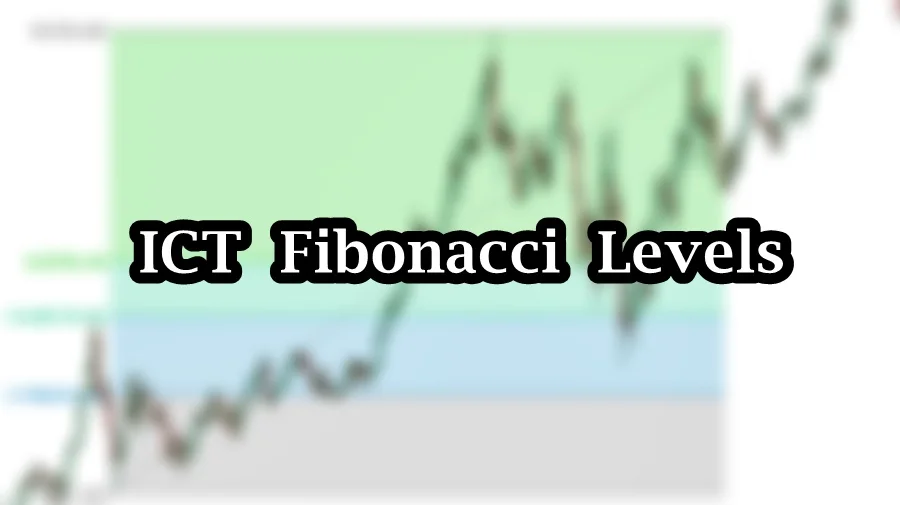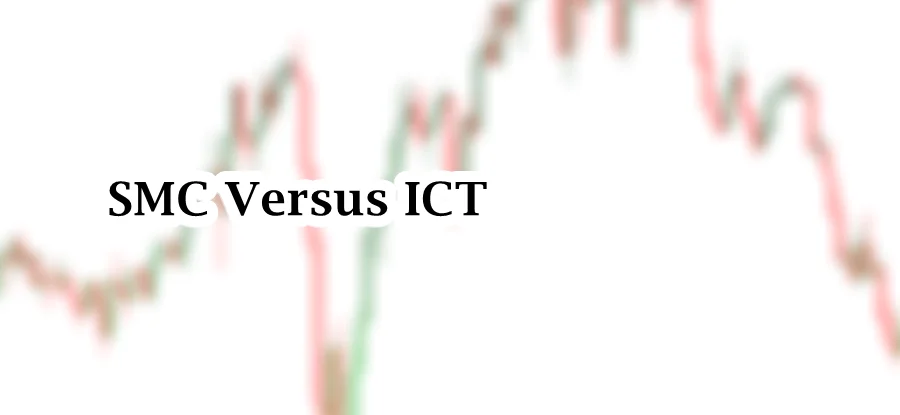
Table of Contents
Charting tool made technical analysis an easy task. In financial trading, Fibonacci retracement tool is commonly used to target potential areas. These areas serve as Demand and supply zones. Confluence of other strategies are used to find trade entries within the zones. In ICT, these levels are used to time entries and exits with precision.
This article explores the concepts of ICT fib levels in bullish and bearish market and its significance in trading.
Understanding ICT Fibonacci Levels
In trading Fibonacci ratios are used to find retracement or correction of trend. Most common Fibonacci ratios are 23.6%, 38.2%, 50% (also known as Equilibrium Level), 61.8%, and 78.6%. These are levels are most commonly used among trader and they often trade setup in these ranges. These ranges often act as support and resistance areas before continuing its trend.
Fibonacci Levels are also used personally by Michael Huddleston, also known as Inner circle Trader. ICT Fibonacci levels are used in conjunction with other ICT concepts. In ICT, 50% areas is known as equilibrium level. From 62% to 79% is the OTE zone where the ultimate focus should be on 70.5% which is OTE level.

While not a traditional Fibonacci level, the 70.5% level is a key ICT level. In the ICT trading concepts, this level is often regarded as a deeper pullback within a trend and is frequently used for more precise entry points, particularly when liquidity is swept before the price reverses.
ICT trader draw the Fibonacci levels from swing low to swing high or vice versa depending upon trend of market. ICT trader watch for the OTE zone for potential entries and exits.
Trading ICT Fibonacci Levels in Bullish Market
Step 1: Identification of Market Structure
Uptrend in market creates higher highs and higher lows. Market structure is core of ICT trading concepts. It is important to determine clear Break of structure (in trend continuation) and change of character (in trend reversal). It helps in marking swing low and swing high.
Step 2: Draw ICT Fib Levels
Market structure allows trader to point out swing high and swing low. ICT trader draw Fibonacci levels from recent swing low to the swing high in an uptrend. After this they wait for the price to retrace to the key levels. OTE zone is the first priority.
Step 3: Look for other ICT Concepts
ICT traders never solely focus on Fib retracement levels. Instead, they look for confluence of other ICT trading concepts.
Order Blocks, Liquidity pools, Break of structure, and Fair Value Gap are among the concepts that they focus on. It is crucial to look for them within the swing low and swing in uptrend.
Step 4: Timing Entries:
When price reaches the anticipated areas, traders look for candlestick pattern for sniper entries in the market. Most commonly used candlestick patterns are rejection wicks (hammer and Hanging man candlesticks), and Bullish and Bearish Engulfing.

Trading ICT Fibonacci Levels in Bearish Market
Step 1: Identification of Market Structure
Downtrend in market creates lower lows and lower highs. Market structure is core of ICT trading concepts. It is important to determine clear Break of structure (in trend continuation) and change of character (in trend reversal). It helps in marking swing high and swing low in downtrend
Step 2: Draw ICT Fib Levels
Market structure allows trader to point out swing high and swing low. ICT trader draw Fibonacci levels from recent swing high to the swing low in a downtrend. After this they wait for the price to retrace to the key levels. OTE zone is the first priority.
Step 3: Look for other ICT Concepts
ICT traders never solely focus on Fib retracement levels. Instead, they look for confluence of other ICT trading concepts.
Order Blocks, Liquidity pools, Break of structure, and Fair Value Gap are among the concepts that they focus on. It is crucial to look for them within the swing low and swing in uptrend.
Step 4: Timing Entries:
When price reaches the anticipated areas, traders look for candlestick pattern for sniper entries in the market. Most commonly used candlestick patterns are rejection wicks (hammer and Hanging man candlesticks), and Bullish and Bearish Engulfing.

Common mistakes
Despite its powerful nature, there are mistakes that a trader should avoid while using ICT Fib levels.
- Do not rely solely on Fibonacci levels. Always look for confluence of other ICT factors. It includes Order Blocks, Liquidity Sweeps, Liquidity Grabs, and the most important is analysis of market structure.
- The second mistake is incorrect identification of swings high and swing lows. Market structure helps in this case. Clear all ambiguities related to market structure. It is crucial and helps in drawing of correct fib levels.
- Ignoring multi-timeframe analysis is another big mistake. Fib levels drawn on lower timeframe may be invalidated by larger moves on daily or weekly charts.
- It is important not to over-trade. Not every retracement into OTE zone results in high-probability setup. Wait for the opportunities. Don’t every try to capture every move of the market.
Final note
ICT Fib levels are a valuable tool for identifying potential reversals and retracements, especially when combined with institutional trading concepts like liquidity and market structure. However, they should not be used in isolation. Proper risk management, including stop-loss placement and position sizing, is essential for success. Markets can be unpredictable, and no strategy guarantees profits. Trading involves significant risk, and traders should be aware that losses can exceed initial investments. Always test strategies thoroughly and trade within your risk tolerance, using ICT Fib levels as part of a well-rounded trading approach.
Frequently Asked Questions (FAQs)
What are ICT Fibonacci (Fib) Levels?
ICT Fib levels are based on traditional Fibonacci retracements. ICT trader adopted the same concept with little changes in ICT methodology. These levels are used to identify potential price reversal zones by combining them with key concepts like liquidity, market structure, and smart money behavior.
How do ICT Fib Levels Differ from Standard Fibonacci Levels?
While the numeric levels in ICT and standard Fibonacci are similar (e.g., 61.8%, 70.5%, 79%), ICT Fib levels focus on institutional order flow, market imbalances, and key price action setups. They are typically used alongside liquidity pools, order blocks, and other ICT tools to improve accuracy.
What are the Most Important ICT Fib Levels?
In ICT trading, the 61.8%, 70.5%, and 79% retracement levels are crucial. These deeper retracements often align with smart money accumulation or distribution zones, where institutional traders are likely to engage.
I’m Abdullah Shah, a content writer with three years of experience in crafting engaging and informative content. My background in market analysis complements my work, allowing me to create content that resonates with audiences. I’m also a seasoned practitioner in the forex and crypto markets, with a strong foundation and deep interest in finance. My passion for the financial world drives me to produce content that is both insightful and valuable for those interested in understanding market trends and financial strategies.





